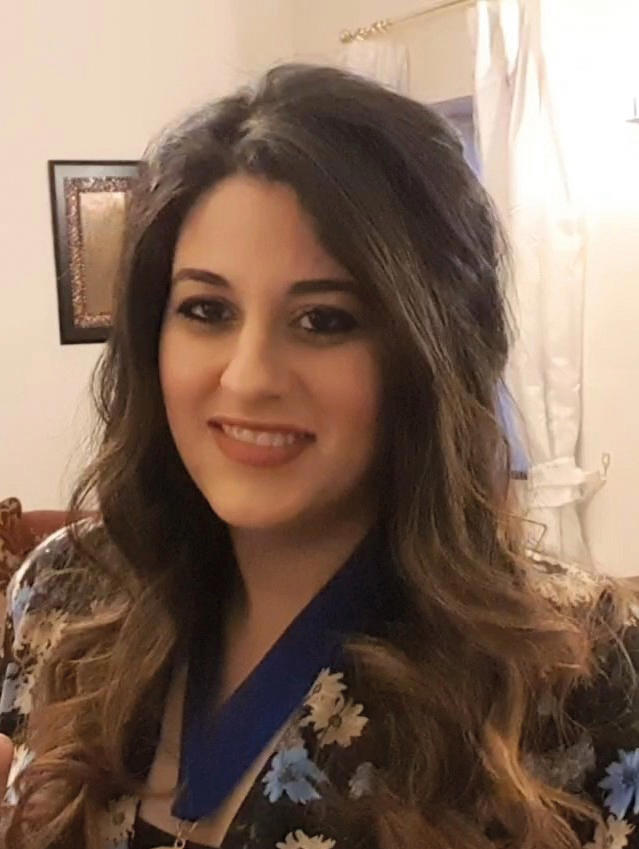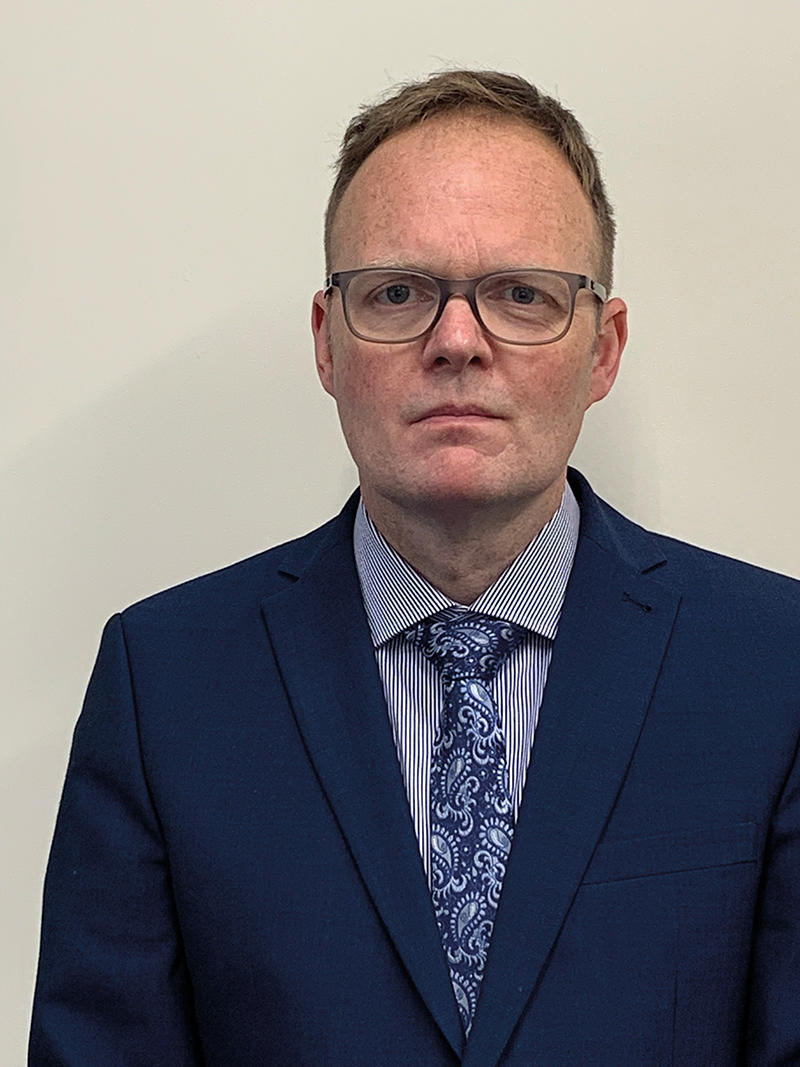The challenges of COVID-19 have seen widespread changes to the ways in which health services are designed and delivered, and to the day-to-day lives of doctors and patients.
In many cases this change has resulted in the accelerated adoption of policies and technologies that had previously been absent or at an early stage of implementation.
Examples of such ‘innovations of necessity’ include genetic vaccines, wearable health technology, virtual reality and artificial intelligence.
The pandemic has also seen changes to policy, such as granting healthcare providers with greater freedom to adapt their working practices through more flexible approaches to national regulatory guidelines, changes that have been generally welcomed by health professionals.
It requires a set of examination skills that we were never taught at medical schoolsDr Micklewright
Yet with change comes uncertainty about how new technologies and ways of working might affect patients and practitioners in the future, and whether these will result in challenges of their own such as the exclusion of certain patient groups or new barriers to care.
‘The pandemic has forced everyone to start accessing healthcare in a very different way,’ explains Cheshire GP Tom Micklewright.
‘Doctors had to suddenly become a lot more familiar with doing remote assessments and consulting and that required a set of examination skills that we were never taught at medical school.
‘Doctors had to learn to start adopting new technologies to consult remotely. All these pressures mean that there has been a massive shift in how we consult.’
Quality assurance
Dr Micklewright also works as a primary care lead for a digital health firm, the Organisation for the Review of Care and Health Apps.
He says the increased use of digital health apps and medical wearable technology brought about by the pandemic is likely to be a fixture of future healthcare delivery.
‘Speaking for general practice, we’ve been so under resourced for so many years with increasing demand on our services, there’s never been the resource, investment or headspace to think in terms of digitally revolutionising practice,’ he says.
‘I think patients now are accepting and acknowledging that this has to be the way forward and doctors are a lot more open to using others means to examine patients remotely, and that includes wearables.’
 VIRTUALLY: Online meetings and consultations have become commonplace
VIRTUALLY: Online meetings and consultations have become commonplace
In addition to apps related specifically to COVID, Dr Micklewright said that there were now a wide variety of similar digital tools that could be used to monitor conditions such as asthma and diabetes.
He accepts, however, that such new technologies have limitations and, in many cases, need to be subject to more rigorous assessment and standardisation.
‘You’ve now got lots of other apps that perhaps aren’t COVID-specific, but they offer a potential way to de-load the pressure in the system in terms of managing other chronic disease,’ he says.
‘[However] clinicians in particular still lack confidence in a lot of digital health tools, and it’s understandable why as there’s very few ways that you can quality assure these apps.’
Virtual communication
 EL-GHAZALI: Expects virtual platforms to carry on being used
EL-GHAZALI: Expects virtual platforms to carry on being used
Technology played a significant role in how doctors communicated and worked together during the height of the pandemic last year.
Like many hospital doctors, London-based consultant anaesthetist Sally El-Ghazali worked in intensive care during the pandemic, often alongside doctors redeployed from other specialties.
She says being teamed up with people she did not know or had ever worked with before, along with the barriers posed by PPE (personal protective equipment) and other COVID restrictions, mean virtual means of communication become increasingly important.
‘We had to be forced into very weird teams very quickly just to be able to manage the situation,’ she says. ‘There were a lot of people who we didn’t necessarily know face-to-face, but we had to work with them on shifts. One of the things we relied on were things like WhatsApp and Zoom to disseminate information.
The pandemic has made it a lot easier to institute particular ideas because we’ve had to work so quicklyDr El-Ghazali
‘We would have a morning brief via MS Teams, everyone would log in at a certain time and then we would go through any particular issues or absences to consider when looking at the rota.
'That was something that we didn’t have before the pandemic when [back then] we usually had one room where everyone met.
‘It all focused on just trying to establish communication and establish ways of making the best use of people and their skills.’
She says virtual platforms played a big role during the height of the pandemic and she expects this trend to continue in the post-pandemic era.
‘The pandemic forced us to do, or think about doing, things in a virtual way, such as virtual learning. That is something that I think I can definitely see continuing after the pandemic and established for some time.
‘The flexibility that it provides not just in terms of communication with the team but from an educational point of view. My colleagues can log in to a particular meeting or listen to training even if they’re off work, they don’t have to come into the hospital to access these things.
‘The pandemic has made it a lot easier to institute particular ideas because we’ve had to work so quickly. Before it used to be that if you had an idea it would take a long time to get the right people involved. With COVID, everything had to be done so quickly.’
Cut in bureaucracy
Changes to the regulatory process and efforts to reduce the burdens posed by paperwork and bureaucracy were another by-product of the pandemic.
In March last year, the CQC (Care Quality Commission) suspended its inspections for a period of more than six months, with appraisals for GPs similarly halted for a time.
While regulatory processes have since been restored, the GP appraisal process has returned in a far different form to that which it had previously encompassed, an annual appraisal conducted virtually with an enhanced focus on professional development and wellbeing.
 PURBRICK: More focus on clinical care enabled by a cut in bureaucracy
PURBRICK: More focus on clinical care enabled by a cut in bureaucracy
GP partner at the Hadleigh Practice in Broadstone, Dorset, Andy Purbrick says he feels that many of the changes aimed at reducing the bureaucratic burden on GPs during the pandemic had made a significant difference to refocusing doctors’ time back to clinical care.
He said the suspension of CQC inspections in particular had dramatically freed up time for him to care for patients, and for those running the business side of things to adapt to the challenges of the pandemic.
‘CQC was the biggest one, not just for the GPs but for the practice managers that took the pressure off us,’ he says.
‘Practice managers were able to be focused on changing the way the practices worked to meet the health and safety regulations relating to COVID, [while] we [GPs] were able to put our energies into all those other things that we were asked to do like adapting to new ways of working and adopting new technologies.
‘It felt like we had much more freedom to adapt. I think we showed that when primary care doesn’t have too much regulation it can adapt to anything. You just have to look at how we set up home monitoring of oxygen overnight, how we set up the COVID vaccination programme overnight, how we did adopt that new technology to do remote consultation and developed hot and cold sites within practices. All of that just came because we are small, flexible businesses that can adapt to change providing we’re not hamstrung by bureaucracy.’
Appraisal changes
Last year also saw the temporary suspension of GP appraisals, and although the appraisals process resumed in October 2020, their return saw a new ethos and rebalanced approach.
Dr Purbrick says the new appraisal regime has been a breath of fresh air, one which he hopes to see continue.
‘To have appraisals as much more of a supportive conversation rather than a tick-box exercise to make sure that you had done 50 education credits and feeling that you have to jump through a large number of hoops for mandatory training was really welcomed,’ he says.
Clinicians in particular still lack confidence in a lot of digital health toolsDr Micklewright
‘The hope is that will stay like that moving forward.’ Other areas where paperwork burdens have been reduced as a result of COVID include the suspension of GPs’ requirements around DVLA medical enquiries and more flexibility around the death certification process, both of which Dr Purbrick says had accounted for a significant amount of GP workload in the pre-pandemic era.
‘That has freed up significant GP time and the hope is those death regulations, although they were part of the emergency bill, will be taken forward. We’ve been trying to get those of changes for years and they’ve managed to come in overnight because of COVID, so it’s another example of removing bureaucracy and getting rapid beneficial change.
‘I’d hope that they’d look at the way it’s been adopted, how we’ve worked with the new recommendations and how there have been no adverse outcomes for patients and how it has freed up GP-time to be more efficient and hope that they could roll [this approach] out to other areas.’

